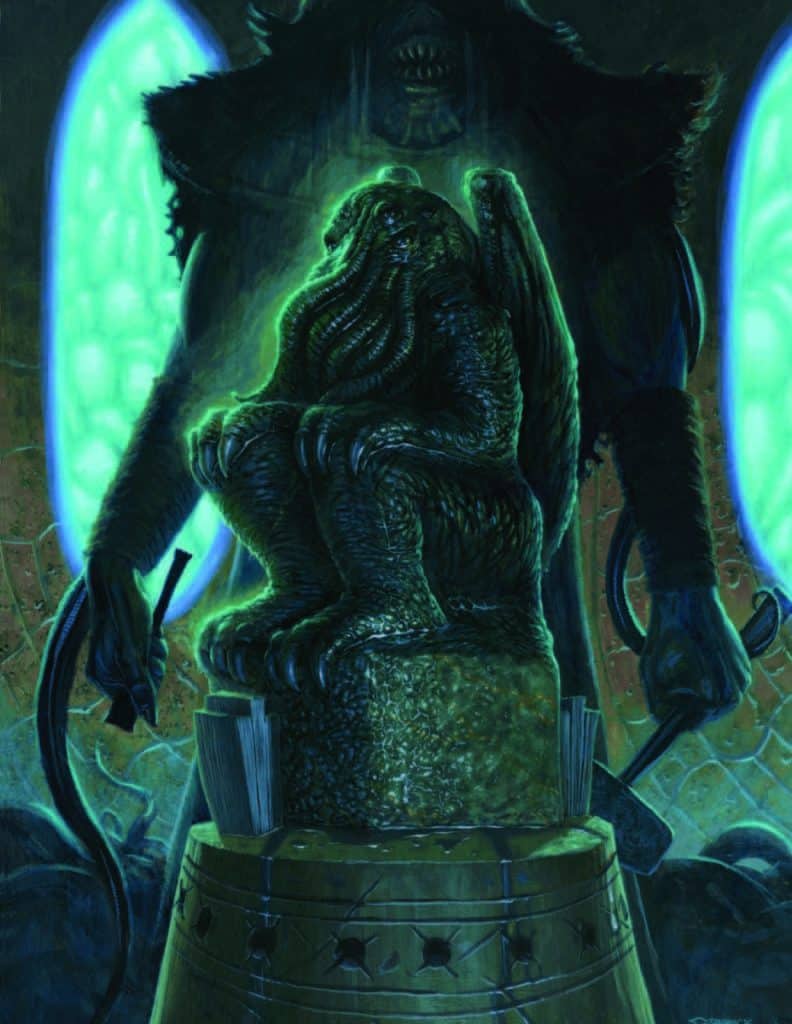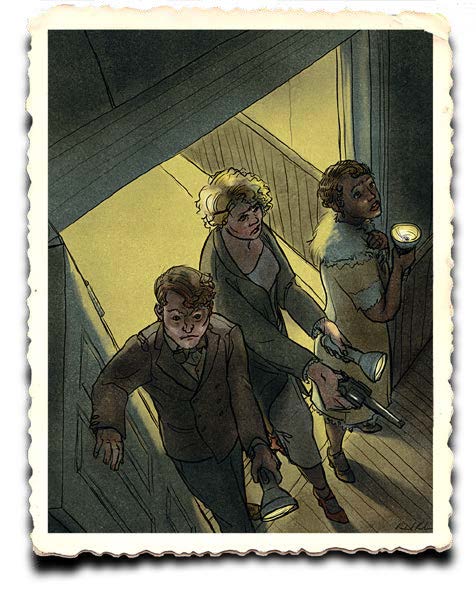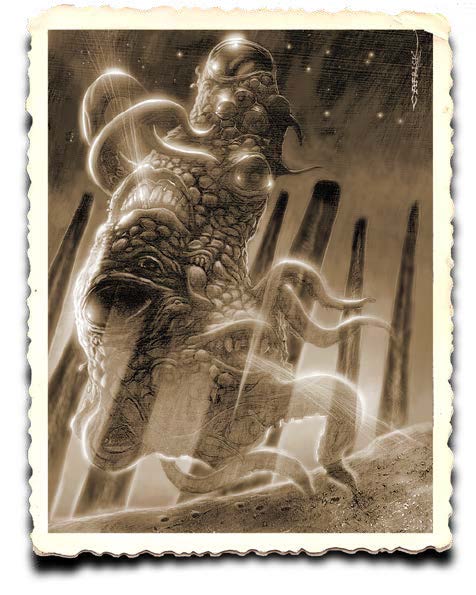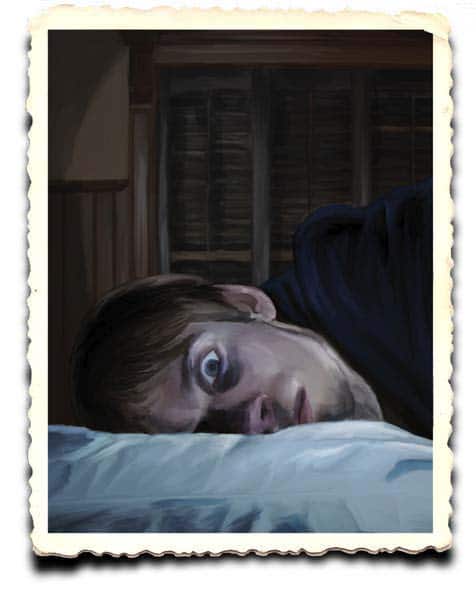With the HBO series Lovecraft Country and Critical Role‘s excellent one-shot, Shadow of the Crystal Palace, I decided I wanted to learn more about the roleplaying game Call of Cthulhu. Fortunately, they recently released its 7th Edition ruleset.
In Call of Cthulhu, you play as investigators of unusual cult occurrences. Starting with a weird event, murder, missing person, or discovery of an artifact. The investigators are exposed to sanity-breaking monsters, events, and rituals. They must stop the cultists or go insane trying.
Unlike other roleplaying games, this is not a game of heroic fantasy. Your characters are not superheroes with innate magical powers. You start off as normal humans in the early 1900s. Your characters have real jobs, often in academia, journalism, or as an author. Some are police detectives, P.I.s, or some other adventurer type able to defend themselves against other humans.
But the most important aspect of Call of Cthulhu characters is you are frail in body and mind. Both of those will be tested as you discover clues, uncover danger, and learn reality-altering Truths.
When sitting down to play, it is strongly recommended that the players create characters together with the Keeper (Call of Cthulhu’s name for the Game Master). The group or the Keeper should decide what city and/or country they are starting in. They should decide what year (the default is the 1920s). Then as characters are created, they can make connections between themselves.
If you’ve read my article about Trail of Cthulhu and the other Gumshoe games, you will see a lot of similarities between these two systems. This is because Kenneth Hite, writer of Trail of Cthulhu, was heavily influenced by the earlier editions of Call of Cthulhu.

Who am I? Who are you?
All players start by rolling their Characteristics (called Attributes in other systems). There are some slight variations in their random generation method:
- Strength (Muscle Power): 3d6 times 5
- Constitution (Health, Vitality): 3d6 times 5
- Dexterity (quickness, agility): 3d6 times 5
- Appearance (attractiveness and personality): 3d6 times 5
- Intelligence (learn, memory, analysis): 2d6+6 times 5
- Size (Build): 2d6+6 times 5
- Power (Force of Will): 3d6 times 5
- Education (fact-based learning): 2d6+6 times 5
- Luck (Turn a failure into a success): 3d6 times 5
The total of each of these Characteristics represents a percentile or chance of success amount. Whenever there is a skill or characteristic check, the player rolls percentile dice. No characteristic or skill can go above a 99%.
That means rolling two d10s, but designating one as the 10s unit and the other as the 1s dice. Some d10s are made as a 10s dice by noting that a 9 is 90.

For those unfamiliar with a percentile system, if you roll a 6 (60) and 1, the total is not 7, it is 61. You compare that result to chat you’re checking to see if you rolled beneath that percentage. Therefore, if you have a 50 in a characteristic, that means you have exactly a coin-flip chance of prevailing on a check.
Once those values are rolled, you must then determine your character’s age. Older and younger characters get bonuses to education and physical abilities. After that you calculated your damage bonus, size, hit points, and movement. These are all derived from your characteristics.
Halves and Fifths
If you look at the official character sheets, you will notice space for three different numbers with slashes in-between. This is for you to write down the half and fifth values. If your characteristic is 50, then half is 25 and a fifth is 10.
These figures represent hard (half) and extreme (fifth) checks. Instead of getting below a 50, if its harder than normal, you must roll under a 25. Extreme means under a 10.
What did you do?
The next step is picking your Occupation. 7th Edition offers over 100 occupations to choose from. This allows you to create nearly anyone you want but also risks analysis paralysis. Obviously, this article cannot list every occupation. Rather than “standard” occupations (private investigator, archaeologist, scientist), I’ll list what I find as unusual or unexpected choices:
- Acrobat
- Asylum Attendant
- Butler/Valet/Maid
- Cult Leader (Church of Cthulhu (Reformed))
- Elected Official
- Mountain Climber
- Prostitute
The other thing about occupations is some are noted as either Classic, Lovecraftian, or Modern. It suggests ways the Keeper can limit occupations if she wants to run a particularly themed game.
For each occupation, it gives a formula by which you calculate the total number of points you can spend on occupation skills. For example, a Film Star’s starting points is Education x 2 + Appearance x 2. But a Book Dealer is Education x 4.
Each occupation also has specific occupation skills. Now when you look at that skill on the character sheet, there is a percentage in parentheses. That is the base chance every skill has at success (anyone can fire a gun). When you add points it increases the skill from that base chance. Any points not spent at character creation are lost.
In addition to occupation skills, you can spend your occupation points on your Credit Rating. Each occupation has a Credit Rating range. The first number is where you start, the second is the maximum you can increase it to at character creation.

Credit Rating governs your lifestyle and your walking-around money. For example, 10-49 is Average. Your character has an average home and can afford to stay in moderately-expensive hotels. They have a reliable car and can afford 2nd-class travel. But 50-89 is Rich, with a susbstantial home, luxury personal car, and 1st Class travel.
The final step in assigning skill points is Personal Interests, which is your Intelligence x 2 in points. You can spend these anywhere you want, whether occupational or non-occupational skills.
After the mechanical bits, you create a backstory, an appearance descriptor, and things like your ideology/beliefs, quirks, significant locations, and significant people. Like most games, you end by determining your starting gear, equipment, and possessions.
It is possible for your character to have a small handful of skills above 50%, but the more you specialize, the narrower your skill set. But at 50% or below, success is less than a coin-flip away. Unlike Trail of Cthulhu and the other Gumshoe games, your investigators do not start out as hyper-competent. The Keeper must take this into account to keep sessions moving, especially early on, despite failed rolls by Players.
Sanity and the Cthulhu Mythos
As I discuss in my article on the Cthulhu Mythos, a major theme of these stories is that knowledge is dangerous. The more you learn, the more likely you will learn an unsettling truth about the Elder Gods. But that knowledge is often necessary to stop the nefarious plots of the cultists.
An Investigator’s Sanity score is equal to their Power Score. Sanity is a resource that is depleted with investigations. If an Investigator loses more than 20% of their current Sanity score in a day, then they go indefinitely insane. The Keeper and the player must figure out a phobia. While insane, the Investigator may be required to make Reality Checks. Insanity can be cured.
Cthulhu Mythos is a skill that means your mind has been opened to the reality of the presence of the Elder Gods and their minions. No Investigator can start with points in this skill, unless the Keeper permits it.

Points in Cthulhu Mythos can only be gained by encountering creatures of or writings about the Mythos. However, for each point of Cthulhu Mythos your investigator “earns” results in a decrease in their maximum Sanity score. While your Sanity can go up and down, exposure to the true nature of “reality” crowds out rational thought.
When your Investigator gains points in Cthulhu Mythos through reading Mythos writings, the player must decide whether their Investigator believes what they’ve learned or not. If they are not a believer, then the points gained do not decrease their current Sanity score (just their maximum Sanity).
However, when the Investigator encounters a Mythos creature first hand and loses even a single point of Sanity, then they become a believer. They then immediately lose their current Sanity equal to their Cthulhu Mythos score! This could easily exceed 20% of that score causing indefinite insanity.
Experience and Skill Increases
Next to each skill on the Character Sheet is a checkbox. Whenever your Investigator succeeds on a skill, then place a check mark in that box. Then at the end of each session, the player then reviews which skills have a check mark on them. This is not done with Cthulhu Mythos or Credit Rating.
For each skill with a check, the Player makes a skill check. If you fail (roll above your current score), then you can increase that skill by 1d10. This means that if you have a low chance of success, but succeed anyway, your Investigator has a high chance of increasing that skill.
But the higher the skill, the less likely you can learn more. Each check mark is then erased. Once your Investigator gets a skill to 90% or above, they can add 2d6 to their Sanity score.
If you want to explore the wilder (and wider) world of tabletop roleplaying games go there! If you want to start to learn on how to paint miniatures, click already! Or maybe you want to read more of my posts about Dungeons and Dragons, then click away here!

